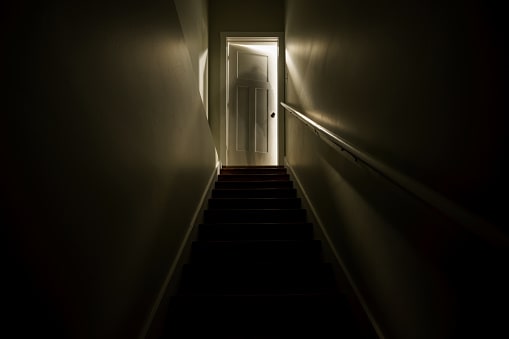Lucid dreaming is a state where the dreamer is aware they’re dreaming and can often control the dream’s narrative. Though fascinating and even therapeutic for some, it comes with potential psychological and physiological concerns. Frequent lucid dreaming may disrupt REM sleep, leading to poor sleep quality, hallucinations, nightmares, and even sleep paralysis.
The vividness and realism of lucid dreams can cause confusion between dream and reality, especially for vulnerable individuals. Despite scientific confirmation of its existence, the practice remains misunderstood.
This article explores whether lucid dreaming is dangerous, breaking down both the risks and myths to help you stay informed.
Key Takeaway: Is Lucid Dreaming Dangerous?
- Frequent lucid dreaming may lead to disrupted sleep patterns and potential sleep deprivation.
- The similarity between lucid dreams, nightmares, and reality can cause anxiety and confusion for the dreamer.
- Intense and prolonged lucid dreaming might overstimulate the dreamer, increasing stress and potentially worsening sleep quality.
- Lucid dreaming occurs during REM sleep but may interfere with normal REM processes like memory consolidation and emotional regulation.
What Exactly Is Lucid Dreaming? Is It Real?
As stated, in lucid dreaming, you see yourself doing things you don’t usually do in real life. For example, you see yourself flying everywhere you want to go. The dream looks so vivid that you feel you’re present in the state.
For example, if Paris is your dream destination, you might fly there, walk the streets, or stand in front of the Eiffel Tower. Even though you’re aware you’re dreaming, your senses are heightened; lucid dreaming is physical.
Lucid dreams are more common during Rapid Eye Movement (REM) sleep. It’s a period of deep sleep with intense breathing, more brain activity, and eye movements.
A person enters the REM state after 90 minutes of sleep. Lucid dreaming may last only ten minutes or an hour.
Aristotle, the Greek philosopher, first introduced the concept of lucid dreaming in his treatise On Dreams. He described a state of consciousness when people dream.
But are lucid dreams real?
Yes, lucid dreaming is pretty accurate because you’re physically and emotionally present. The scientific community at Hull University confirmed lucid dreaming for the first time in 1975.
According to a study, lucid dreaming increases activity in the prefrontal cortex, associated with cognitive abilities. Therefore, lucid dreaming is a hybrid state of consciousness.
In normal dreaming, your consciousness levels don’t work. You do not control your actions and aren’t self-aware of what you see.
In contrast, in Lucid dreaming, you’re self-aware; you can influence your actions, make decisions, and decide what should happen next. In short, you enter a magical world where you have the superpowers you always wanted.
Is Lucid Dreaming Dangerous?
The rising popularity, different interpretations, and myths about lucid dreaming have led some to believe that it is dangerous. Is this true?
No, lucid dreaming isn’t dangerous. You won’t die while lucid dreaming because you’re aware you’re dreaming and can control how your dream goes.
But lucid dreaming can be scary, and when not practiced with caution, it may have the following negative impacts-
1. Hallucinations & Mixing Reality With Dreams
Lucid dreams may cause confusion or hallucinations between what’s real and what’s imaginary. Especially people with mental disorders will find it difficult to distinguish between reality and dreams.

Also, normal lucid dreaming may become an addiction to escape reality when we face any hard time. However, it’s a grave concern because most people don’t fall into the trap, and people who professionally practice lucid dreaming are also able to distinguish between the two.
In case it becomes an addiction, and you find it difficult to differentiate between the two, it’s best to see a licensed psychologist.
2. Sleep Deprivation
A lucid dream occurs in the REM sleep state, which is the final stage of sleep, and when it gets disturbed, the person may feel sleep-deprived.

Also, since lucid dreaming is so vivid, we remain in half-asleep and half-awaken mode. And the shock of lucid dreaming may make you wake up in the middle of the night. Sometimes, it is challenging to go back to sleep, and you may lie awake for some time.
Lucid dreaming causes fragmented sleep, a short cycle of sleep interruptions. Momentary nighttime waking disrupts sleep quality and, in the long run, may cause sleep deprivation.
3. Feeling Trapped In The Dream
Even though it has never actually happened, some people may feel trapped in the dream. You may feel unable to return to reality or wake up.

This often leads to false awakenings. When the dreamer tries to wake up but realizes they are dreaming again, this continues until the person can wake up. This could be a terrifying experience.
4. Sleep Paralysis
This is one of the scariest things about lucid dreaming. Sleep paralysis is the inability to move your body when you’re asleep. This takes place in the REM state because our dreams in the Rapid Eye Movement (REM) state are so vivid that our bodies get paralyzed to prevent us from breaking that dream.

While lucid dreaming, you’re in the REM state. It’s possible that you may gain consciousness while your body is still paralyzed. Sometimes, sleep paralysis is accompanied by hallucinations, creating a terrifying feeling.
It may scare you when you experience it for the first time. But if you train your mind that it’s natural and only a situational stage, you can easily overcome it.
5. Nightmares
Lucid dreams may also turn into lucid nightmares. When things get out of your control, the dream becomes a nightmare. However, this should be less scary than a typical dream because the person is aware that it’s a dream, and you have the ability to remind yourself of it.

While it’s an unpleasant experience, it’s a great way to overcome your fears. Some people, because they are aware that it’s just a dream, actually want to see what happens if they face specific problems and how to prevent such issues in real life.
6. Hypersensitive Emotions
We experience hypersensitive emotions while lucid dreaming. We may experience the loss of a close one, or we may fall in love with someone we have hardly spoken to. Feelings get so heightened that you may cry or laugh in the dream.

Since these emotions are so powerful, we may feel stressed quickly.
Common Myths About Lucid Dreaming
Myths and misconceptions surround lucid dreaming. Let’s debunk some of the most common ones with accurate data:
Myth 1: Lucid Dreaming is Rare
While it’s true that not everyone has lucid dreams frequently, about 55% of people have experienced at least one lucid dream in their lifetime. Regular lucid dreaming is less common, but it’s certainly not as rare as some might think.
Myth 2: You Can Get Stuck in a Lucid Dream
The fear of being trapped in a dream is unfounded. Lucid dreams are a normal part of the sleep cycle, and there’s no evidence to suggest you can get stuck in one. In fact, lucid dreams typically last for only a portion of the REM sleep cycle.
Myth 3: Lucid Dreaming is Not Real
Despite some skepticism, lucid dreaming is a well-documented phenomenon. Scientific experiments, like those conducted by Dr. Keith Hearne in 1975, have provided solid evidence of its existence by observing eye movements in lucid dreamers.
Myth 4: You Need to Be Spiritual to Lucid Dream
Lucid dreaming isn’t limited to any particular spiritual practice or belief system. It’s a natural part of human sleep that can be experienced by anyone, regardless of their spiritual inclinations.
Can You Turn Lucid Dreams Into Something Positive?
Yes, you can turn lucid dreaming into a positive experience. People practice lucid dreaming for spiritual growth, to overcome fears, to fulfill wishes, and for emotional and physical healing.
However, you need to take it slow and believe in the process. Remember that it’s just a dream, and find ways to overcome your fear.
Most people say that they feel pretty relieved after practicing lucid dreaming. It’s one of the proven techniques to practice mindfulness. You can achieve extraordinary things if you focus on lucid dreaming only for 10 to 30 minutes daily.
How To Prevent Lucid Dreaming?
If you feel lucid dreaming is constantly affecting you and you no longer want to experience it, the following steps may help prevent it-
1. Create A Sleep Routine
Developing a sleep routine is extremely important for quality sleep. A sleep routine should include going to bed at the same time every day, switching off all electronic devices, using sleep meditations, and not taking caffeine before bed. You can also try sleep meditation to feel better.
2. Exercise Daily
Daily exercise of at least minutes is essential for your overall development. Exercising gives you energy for the day, but as bedtime gets closer, you feel tired and get a sound sleep. Additionally, you can also opt for mediation. Check out these best free meditation apps to get started.
3. Make Your Bed Comfortable
There are mattresses with plush foam folds that fit your sleeping pattern. It makes you feel relaxed and lets you doze off peacefully the entire night. Again, you dim your lights and light-cancelling curtains, and you may play soft music that creates a pleasant sleeping environment.
Final Verdict
While lucid dreaming offers opportunities for creativity, healing, and self-discovery, it’s not without drawbacks. From disrupted sleep cycles to emotional overstimulation and the risk of sleep paralysis, the dangers, though rare, are real.
Many of these issues arise from excessive or unregulated lucid dreaming. However, with mindfulness, a proper sleep routine, and an understanding of your limits, the risks can be mitigated. It’s not inherently dangerous, but it demands respect and balance.
Whether you’re curious or cautious, the key lies in awareness and control. Approach lucid dreaming wisely, and it can become a powerful tool rather than a frightening experience.